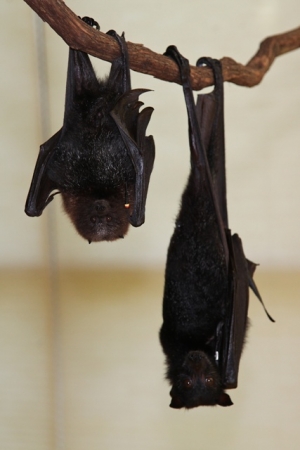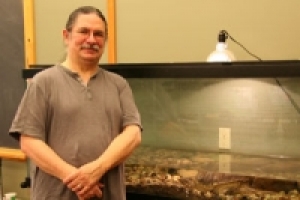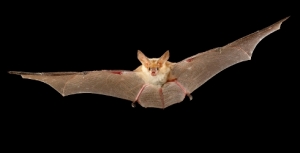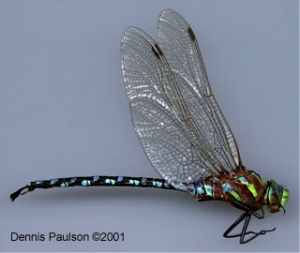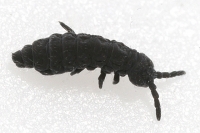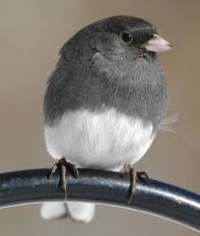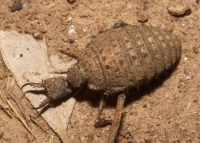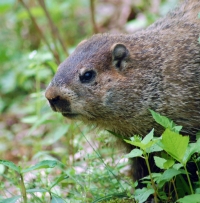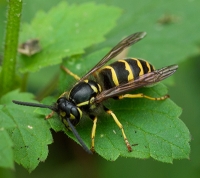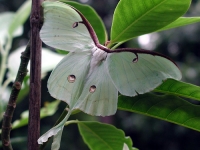
Thank a Bat if You Like Delicious Smoothies on a Hot Day!
When the word "bat" comes out in a conversation the first thing that many people think is about mosquitoes. We wonder how to get more bats in our backyards to have fewer mosquitoes. This is one of the roles bats play in nature, pest controllers. Bats find all kinds of insects to be tasty, like moths, grasshoppers, flies, and beetles to name a few. This not only makes our lives more comfortable, but in agriculture it can save lots of money that would be spent on pesticides.
How the Bat Got His Wings
Long-time Urban Ecology Center member Andy Connors is a born storyteller. Growing up within the Anishinaabe community along the Bad River in northern Wisconsin, Andy developed a strong sense of Native American identity through his ability to engage and connect with others through storytelling. To celebrate the upcoming Wisconsin Bat Festival, Andy tells a riveting traditional Native American story of how the bat got his wings.
Native Animals of the Month: Cave Bats
My mother gave me a deep appreciation for bats. She grew up in Texas, where any bat enthusiast knows, some of the world's most unbelievable bat hibernacula exist. She and her brother had a pet bat named Radar who they found as an orphan. They raised him (as I like to picture in a little matchbox, with tiny bat swaddling) until he grew stronger and older. Unfortunately Radar had an untimely run-in with a neighbor who was positive the bat had rabies. While my mother's memories of Radar faded, her fondness of him never did, and I have my mom to thank for sharing her love of an animal, that in the late-50's was completely uncool to love.
Native Animal of the Month: Lance-tipped Darner
Nature is magnificent. Nature is brutal. Nature is utterly awesome. No creature understands this better than the dragonfly. Dragonflies live their lives fast and furious; as fearsome carnivores, as creatures on a determined mission living on borrowed time and as inspiration for art. What must it be like to live such a life?
Native Animal of the Month - Springtail
Having grown up in Florida, there are some things in the Midwest that are just hard for me to fathom, like the immensity and complexity of Lake Michigan or brutal winters that last from November to April. Another fantastical oddity is a little creature known as the snow flea. When I moved to Wisconsin, I told some friends about bioluminescent critters back home that glow in the dark waters of the Gulf during certain times of the year. They didn't believe me, which is exactly how I felt the first time I heard about snow fleas. I pictured giant fleas hopping heavily on the snow, biting people's ankles as they walked through the woods. I imagined dogs scratching madly as the fleas munched hungrily through their hides. But alas, my imagination was wilder than reality and my ideas about snow fleas were pretty far off.
Native Animal of the Month: Dark-eyed Junco
I recently pre-screened a copy of the Ordinary Extraordinary Junco in preparation for an April family program*. The film truly was fascinating and while I have always liked the little junco (especially when it is one of the only birds around on winter bird walks), my appreciation for them grew even more after having watched the film. The rapid adaptation that juncos are undergoing as a species and their unbridled tenacity make them a really neat bird.
Native Animal of the Month - The Ant Lion
During our recent bout of sub-zero weather, I noted the shortage of wildlife in my backyard. I knew that woodchucks were hibernating in cozy burrows, birds had insulating feathers, and turtles used anti-freeze in their blood to get through the winter, but then I considered our spineless friends. Surely all of Earth's 1.3 million invertebrate species couldn't move inside for the winter. But, where did they go? This question made me think about one bug in particular; one that I commonly associate with the warm weather. The antlion. What was my old buddy Mr. Ant Lion up to this time of year?
Native Animal of the Month - Woodchuck
What?! No article about prancing reindeer or beautiful red cardinals?! I know, I know, but hear me out. I wanted to recognize an animal this month that we don't necessarily see in the winter, yet is living right under our feet. You may not see the woodchuck around this time of year, but he is still there fighting the good fight, hiding inconspicuously beneath the ground's surface. And hey, perhaps Santa wouldn't have needed Rudolph to guide him through the dark if his sleigh had been tethered to 8 mighty woodchucks instead of 8 tiny reindeer. But, I digress. Happiest of holidays to you all. Now, just imagine the woodchuck with a tiny jingle bell collar and glittery snow sprinkled atop his pelt. It already seems more seasonally appropriate, doesn't it?
Native Animal of the Month - Aerial Yellowjacket
As the seasons change from autumn to winter, my field work tapers off and I spend most of time behind a computer, analyzing data and determining what can be accomplished the following field season. During this period our bird walks become my favorite time of the week. The walks give me some personal time to identify with nature be outside. However it isn’t the birds I enjoy the most, it’s the other discoveries. I like finding the overlooked, under-appreciated things that just seem beautiful and you can't really explain why. This week, my favorite find came while I was on a bird walk in the Menomonee Valley.
Native Animal of the Month - The Luna Moth
The beautiful luna moth (Actias luna) is a large white-bodied moth, with lime green-colored wings and pinkish legs. This Wisconsin native is found in the state from spring to summer and flies only in the evenings. It has a wingspan of 3-5 inches and possesses a single transparent eyespot on each wing meant to confuse predators. Hind wings have long curved tails, giving the moth its distinct look.
Copyright © 2023 The Urban Ecology Center

